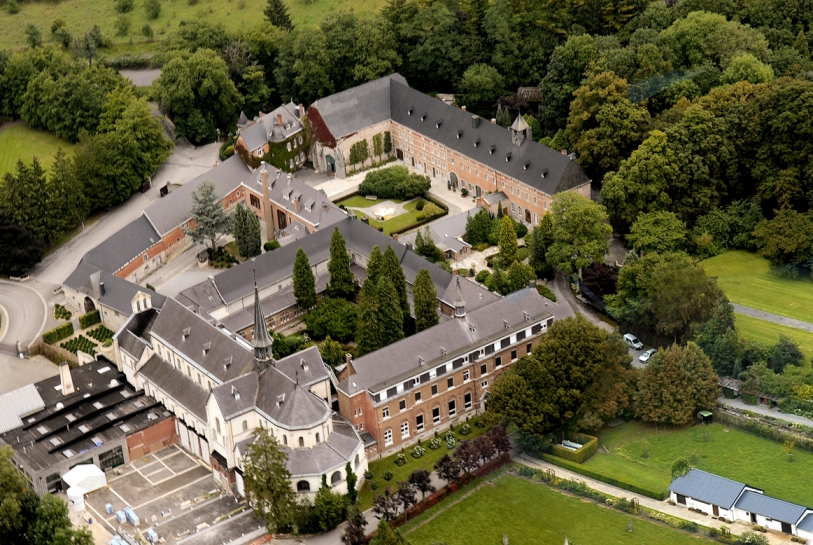





Saint-Remy Abbey
An eventful history...
The Cistercian abbey of Saint-Remy was founded in 1230 by the Lord of Rochefort, Gilles de Walcourt, and his wife Héluit de Faing, both fervent defenders of the church. The only monastery to have settled in the Famenne area, it was first occupied by nuns from Citeaux (France). In 1464, because of the extremely difficult soil conditions and the very harsh climate, the nuns were replaced by Cistercian monks from Félipré near Givet (France). In 1650, the abbey was destroyed and pillaged by the Lorraine troops in the service of Austria. Soon afterwards, the monks rebuilt the monastery; the turret near the main portal dates from that period. The restored church and monastery buildings were torn down during the French Revolution and, in 1797, the abbey's possessions were confiscated. A century later the Cistercian monks repossessed the building which was subsequently elevated to the status of abbey in 1925.
The archives mention a brewing activity as early as 1595.Yesteryear, barley and hops were grown locally. The Rochefort (6, 8 and 10°) is the strongest of all 10 Trappist beers. Its specificity is, resides mainly in the quality of the abbey's spring water (the Tridaine spring) and the special yeast, cultivated within the monastery.The Trappist beer is sold all over town!
The abbey is not open to the public, but you can enjoy the Rochefort Trappist all over town!
Trappist beers!
The abbey produces four Trappist beers:
- The number ten Trappist beer is intense brown, with a compact head and a distinctive fruity taste. It has a fig aroma and is unctuous in the mouth (alcohol: 12 %).
- The number eight Trappist beer is ochre-coloured, has a wide palette of aromas, and a drier, fruitier taste (alcohol: 9.5 %).
- The number six Trappist beer has a spicy and earthy aroma, with an intense fruity taste (alcohol: 7,5 %). The number six is only brewed occasionally.
- The triple extra that gives off powerful flavours, both spicy and full-bodied.
Did you know that?
Rochefort 10 has the highest alcohol content of the 11 Trappist beers in the world (six of which are Belgian): Chimay, , Orval, Westmalle, Westvleteren, , Engelszell (Austria), Spencer (USA), Zundert and La Trappe (the Netherlands), and Tre Fontane (Italy).
And the pink spotted marble ?
Marble is abundantly present in the Walloon sub-soil. This calcareous material can easily be beautifully polished, and is present here in two types: solid black with a somewhat metallic aspect, used as of the Middle Ages, and red-veined. The “Saint Remy” blue is an example of spotted marble, in varying shades of pink with bluish-grey plaques and lighter veins.
It is likely that Saint Remy marble was used as of the middle of the 15th century. The blocks were extracted from the quarry, squared up on the spot (some of the smaller pieces must certainly have been worked on in situ), loaded onto chariots, and laboriously transported. Namur, Dinant, and their fluvial port were privileged stops in this trajectory. The most beautiful realisations in marble of Saint Remy are incontestably those of the 18th century.
Access:
Access to the abbey and the quarry is forbidden, although access to the church during mass is allowed. Here are the schedules for masses.
- Sundays and bank holidays: Eucharist at 11 AM
- Weekdays: Eucharist at 7 AM
- Daily: Vespers at 5:15 PM
